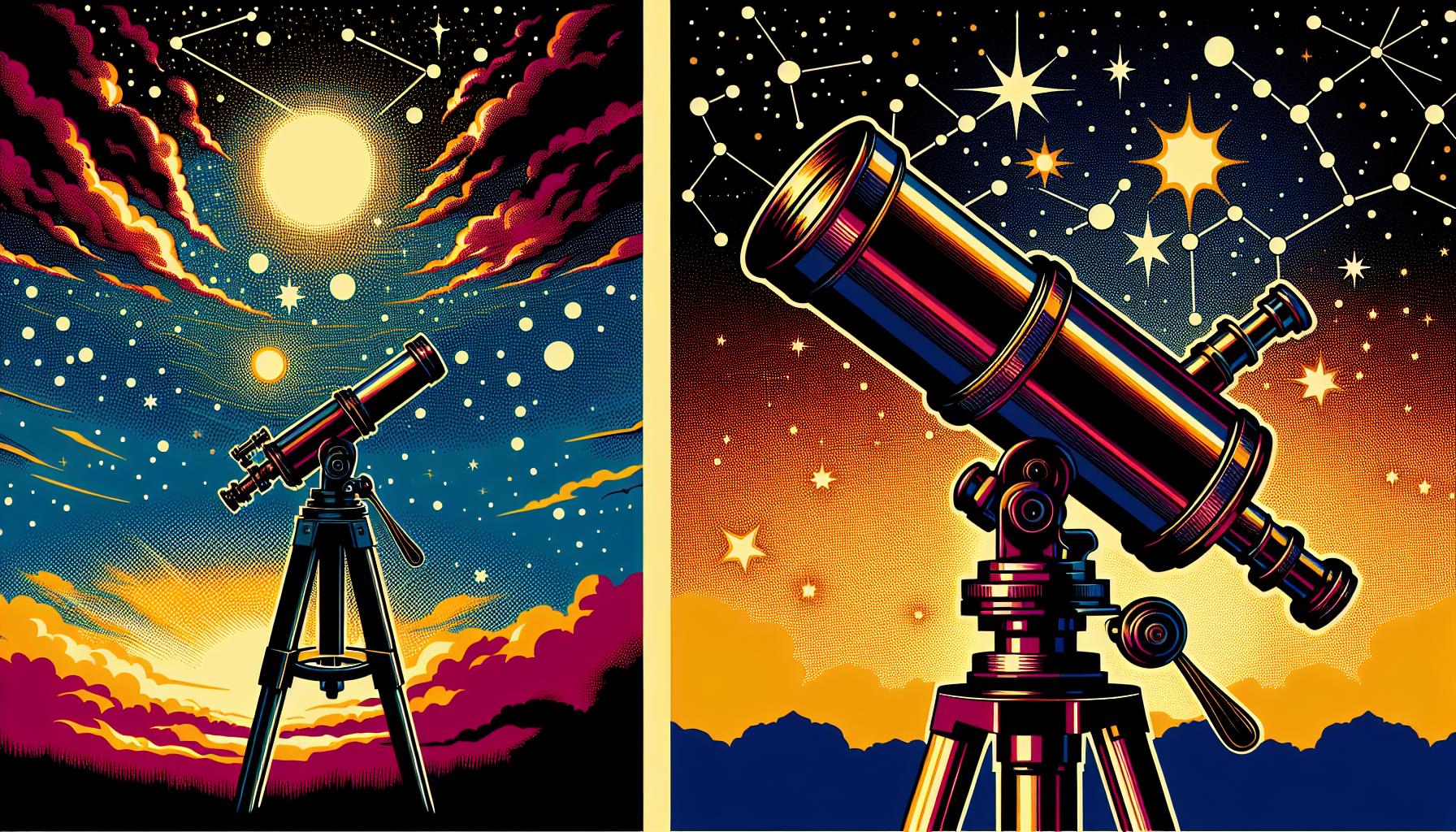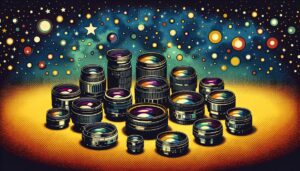This site contains affiliate links to products. I may receive a commission for purchases made through these links.
Ever gaze at the night sky and wish you could capture its beauty? You’re not alone. I was in your shoes once, eager to delve into the world of astrophotography but unsure where to start. The first step? Finding the perfect beginner astrophotography telescope.
Selecting the right telescope can be a daunting task, especially with so many options out there. But don’t worry, I’ve got your back. I’ll guide you through the process, ensuring you find a telescope that matches your needs, budget, and astrophotography goals.
So, ready to embark on your astrophotography journey? With the right beginner telescope, you’ll be capturing breathtaking images of galaxies, stars, and planets in no time. Let’s get started.
Types of telescopes for astrophotography
You’ve mastered your DSLR camera, you’ve honed your vision at night, and now you’re ready to invest in a high-quality astrophotography telescope. For the budding astronomer, the selection might seem intimidating but don’t fret, I’m here to break it down for you. There are three types of telescopes that astrophotographers typically use: Reflecting, Refracting, and Compound (or Catadioptric) telescopes.
Reflector Telescopes are popular among astrophotographers due to their affordability and power. They use mirrors instead of lenses to gather and focus light, allowing for large, bright, and sharp images of distant galaxies and nebulae. However, images may have distortions known as coma.
Refractor Telescopes utilize lenses to bend (refract) light, giving high resolution and contrast that’s great for viewing and photographing planets and the Moon. They’re also great for deep-sky astrophotography as they provide images free from coma and diffraction spikes. The trade-off is, they’re usually more expensive and their size could be cumbersome.
Compound Telescopes, or Catadioptric telescopes, combine the benefits of reflectors and refractors. They’re versatile, well-suited for viewing different types of celestial objects and they’re quite compact. That said, they can be pricier and might not excel at any one type of photography.
Here’s a quick rundown:
| Telescope Type | Good for | Not so good for |
|---|---|---|
| Reflector | Distant galaxies and nebulae | Images with distortions |
| Refractor | High-resolution images | Bulky size and price |
| Compound | Variety of celestial objects | Specialized photography |
Considerations when choosing a beginner telescope for astrophotography
When starting out in astrophotography, it’s crucial to choose the right telescope for your needs. Your telescope will be your primary tool and the deciding factor in the quality and type of images you can capture.
I suggest you delve into your personal needs first. What are your primary goals and how much are you able to spend? A budding astrophotographing hobbyist doesn’t necessarily require a top-of-the-line device. Often, a well-chosen beginner’s telescope can offer an impressive introduction to capturing celestial wonders.
Remember, high cost doesn’t always mean high quality. Astoundingly enough, some entry-level telescopes can often outperform their higher-priced counterparts in certain aspects. It’s all about what works best for you and how well you understand your tool’s operation and capabilities.
If portability is high on your list, evaluate the telescope’s weight and setup procedure. When planning for outdoor trips, a heavy or intricate setup can make the process daunting. The easier a telescope is to move and set up, the more you’ll use it.
Lastly, consider the type of astrophotography you’re interested in. Are you more drawn towards capturing wide field views of constellations, or zoomed-in shots of planets or nebulae? Your choice here can affect the type of telescope you choose: refracting, reflecting, or compound.
Beta-test different models if possible. Visit local astronomy clubs or check virtual platforms where you may get insights from seasoned astrophotographers. Experimenting with different options before making the final purchase might save you from potential regrets and return hassles.
The best beginner astrophotography telescopes
When I was a beginner, Celestron NexStar 130SLT was my go-to telescope. Why you may ask? It offered a robust computerized altazimuth mount fit for starters. It enabled navigation of the stars without requiring extensive knowledge. Even better, it came with a reasonable price-tag that didn’t break the bank.
Another recommended beginner telescope is the Orion 9024 AstroView 90mm Equatorial Refractor Telescope. This telescope is another affordable option not short on quality. It’s optimal for those newbies who are serious about planetary imaging.
For those of you wanting a handheld and travel-friendly option, the Celestron – NexStar 4SE Telescope is your best bet. This portable compact telescope doesn’t compromise on accuracy making it a reliable ally on your astrophotography adventures.
| Telescope | Price Range | Relevance for Beginners |
|---|---|---|
| Celestron NexStar 130SLT | Medium | High |
| Orion 9024 AstroView 90mm Equatorial Refractor Telescope | Low | High |
| Celestron – NexStar 4SE Telescope | High | Medium |
The choice of telescope will indeed be influenced by the specific facet of astrophotography you’re passionate about – be it celestial landscapes or deep-space exploration. You’re well advised to beta-test these telescopes and gather insights from experienced astrophotographers before making a decision.
Tips for taking astrophotography with a telescope
After selecting the perfect beginner telescope for your astrophotography needs – whether it’s the robust Celestron NexStar 130SLT, the precise Orion 9024 AstroView 90mm Equatorial Refractor Telescope, or the versatile Celestron NexStar 4SE – I believe it’s time to talk about maximizing your tool’s potential. The real magic happens when you place your eye against the lens and start capturing the celestial bodies dotting our universe.
Align your telescope properly
A common mistake amongst beginners is improper alignment. When setting up your telescope, make sure it’s aligned with the Polaris – the North Star. This ensures stability throughout the photography session. Improper alignment can result in blurred images and missed opportunities to capture breathtaking astronomical events.
Perfect exposure adjustment
Experimenting with exposure time is another trick up the astrophotographer’s sleeve. Depending on your galaxy of choice, you might need to adjust the exposure time. Deep-sky objects, such as nebulae and galaxies require longer exposures while planets and the moon require considerably less.
| Celestial Body | Optimal Exposure Time |
|---|---|
| Deep-Sky Objects | Longer |
| Planets/Moon | Short |
Managing the Weather Conditions
Astrophotography is largely dependent on clear skies. You must be prepared to work with various weather conditions, and even a hint of fog or a thick patch of clouds can make a difference. That’s why I always recommend keeping a backup plan and being open to rescheduling your astroshoot.
Innovate and experiment
My last piece of advice is quite simple – don’t be afraid to innovate and experiment. Astrophotography isn’t an exact science. It’s an art form, a passion project where trial and error are evident steps towards success.
Conclusion
So there you have it. Proper alignment with the North Star is key to clear, stable images. Remember to tweak your exposure time to suit the celestial body you’re shooting. Deep-sky objects need longer exposure while planets and the moon require less. And don’t forget, weather conditions can make or break your shoot. If it’s not right, don’t hesitate to reschedule.
The most important piece of advice I can give you is to keep experimenting. Innovation is the heart of astrophotography. As you embark on your journey with your beginner’s telescope, embrace the learning process and let your creativity shine. Here’s to clear skies and stunning captures!
Don’t forget to subscribe to our newsletter where you’ll find the latest cosmic discoveries, expert stargazing tips, and exclusive subscriber deals. Embark on your cosmic journey if you haven’t already!









